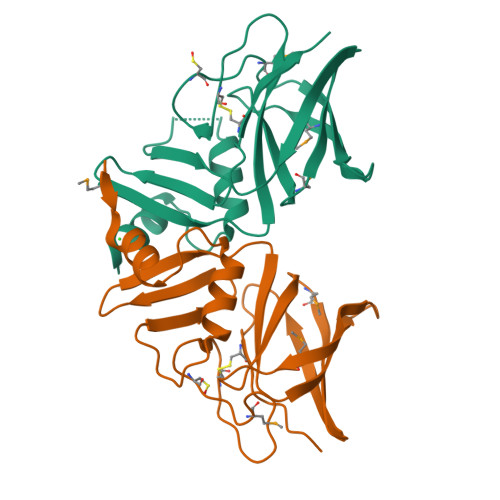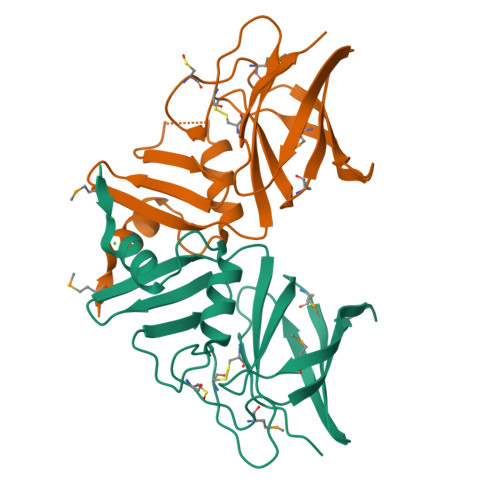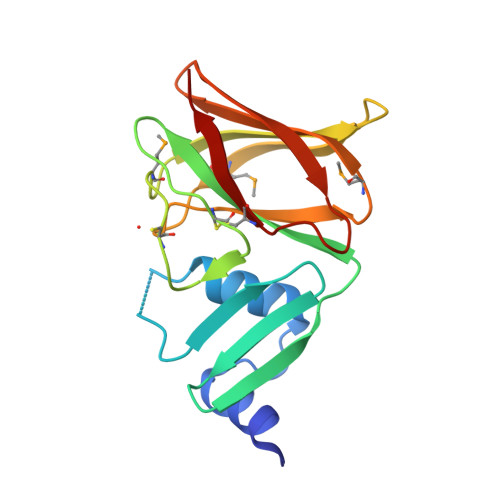Structure of the periplasmic copper-binding protein CueP from Salmonella enterica serovar Typhimurium
Yoon, B.-Y., Kim, Y.-H., Kim, N., Yun, B.-Y., Kim, J.-S., Lee, J.-H., Cho, H.-S., Lee, K., Ha, N.-C.(2013) Acta Crystallogr D Biol Crystallogr 69: 1867-1875
- PubMed: 24100307
- DOI: https://doi.org/10.1107/S090744491301531X
- Primary Citation of Related Structures:
4GQZ - PubMed Abstract:
CueP was initially identified as a copper-resistance gene in Salmonella enterica serovar Typhimurium, which has evolved to survive in the phagosomes of macrophages. Recently, CueP was determined to be a periplasmic copper-binding protein and has been implicated in the transfer of copper ions to SodCII in the periplasm. In this study, the crystal structure of CueP has been determined, revealing a V-shaped dimeric structure. The conserved cysteine and histidine residues are clustered on the surface of one side of the C-terminal domain, suggesting that this cysteine- and histidine-rich region is related to the function of CueP. LC-MS/MS analysis established the presence of a disulfide bond between Cys96 and Cys176 under aerobic conditions. Subsequent biophysical analyses showed that the CueP protein binds copper and zinc, and the mutation of Cys104 to serine (C104S) dramatically reduced the binding affinity for copper and zinc, suggesting that the cysteine- and histidine-rich cluster is responsible for copper binding. This study provides a structural basis for the participation of CueP in the resistance of the intracellular pathogen Salmonella to copper.
Organizational Affiliation:
College of Pharmacy, Pusan National University, Busan, Republic of Korea.






















